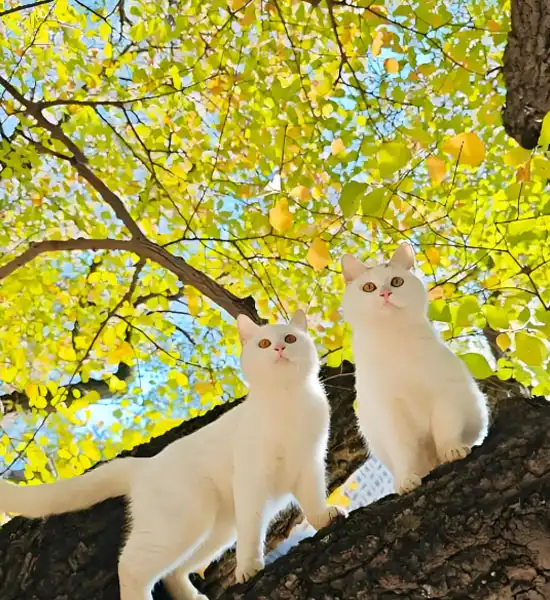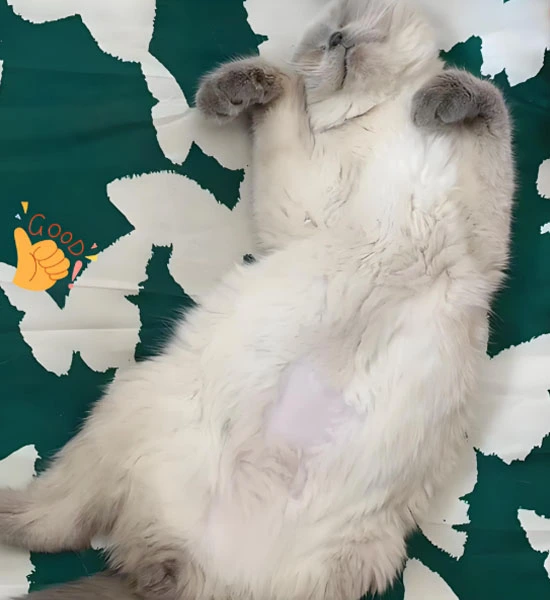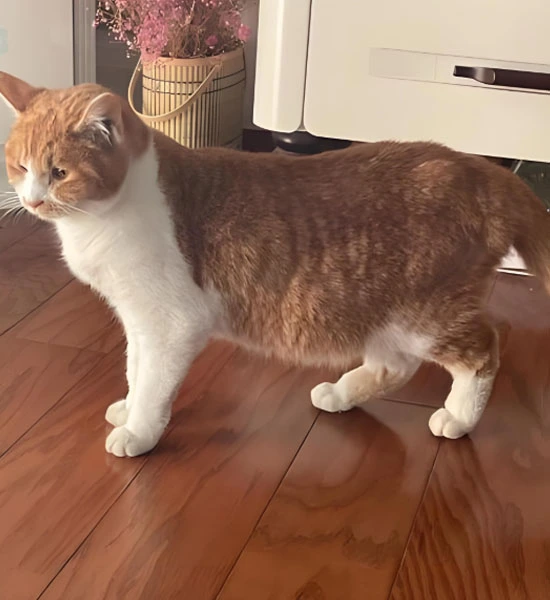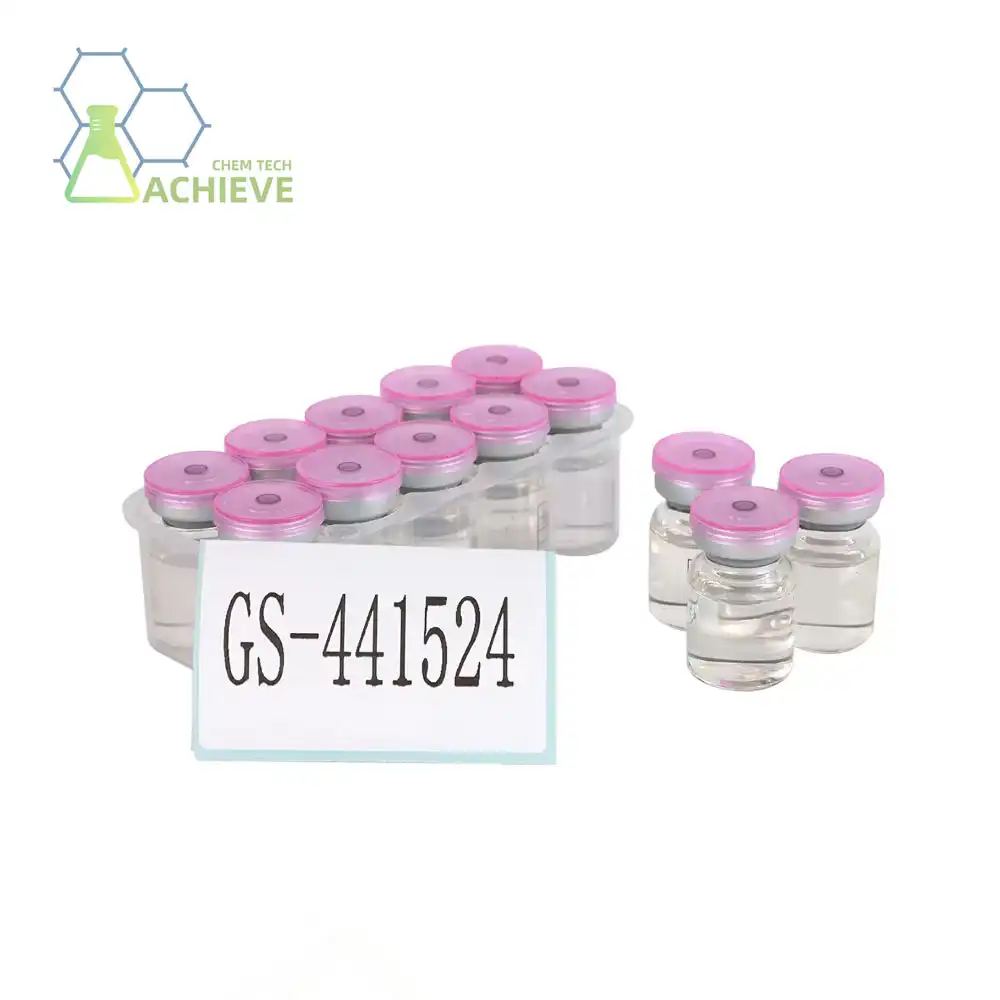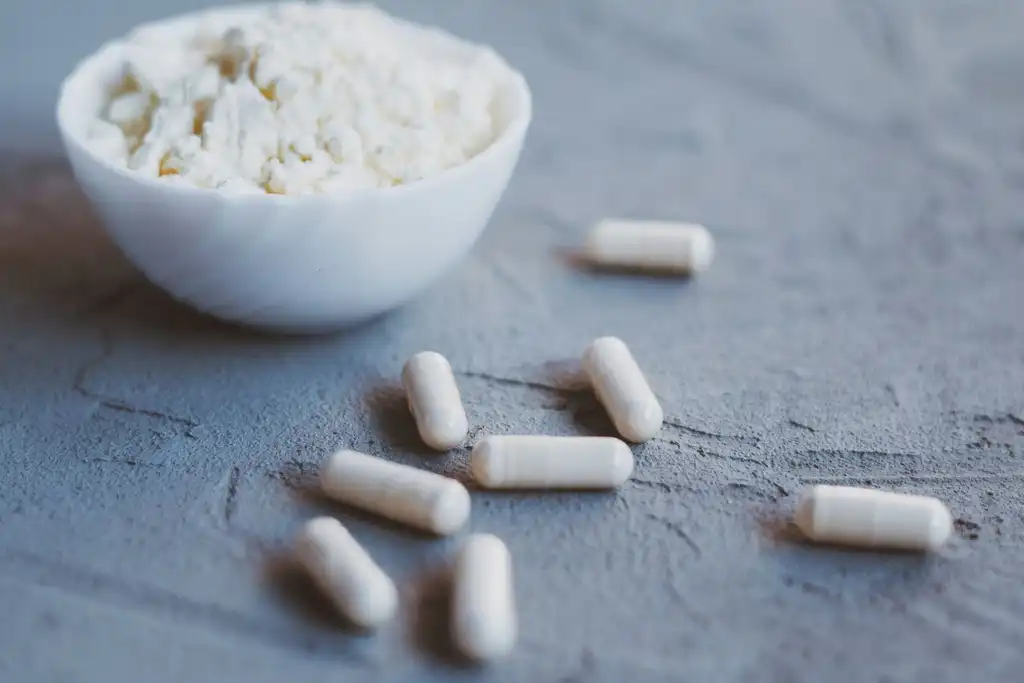What is special about the administration method of GS 441524 powder?
GS 441524 powder has gained significant attention in recent years for its potential in treating feline infectious peritonitis (FIP) in cats. This antiviral compound, originally developed as a potential treatment for Ebola virus, has shown promising results in managing FIP, a previously fatal disease in cats. However, the administration of GS 441524 powder requires specific methods and considerations to ensure its effectiveness and safety. In this article, we'll explore the unique aspects of administering GS 441524 powder and why these methods are crucial for successful treatment.
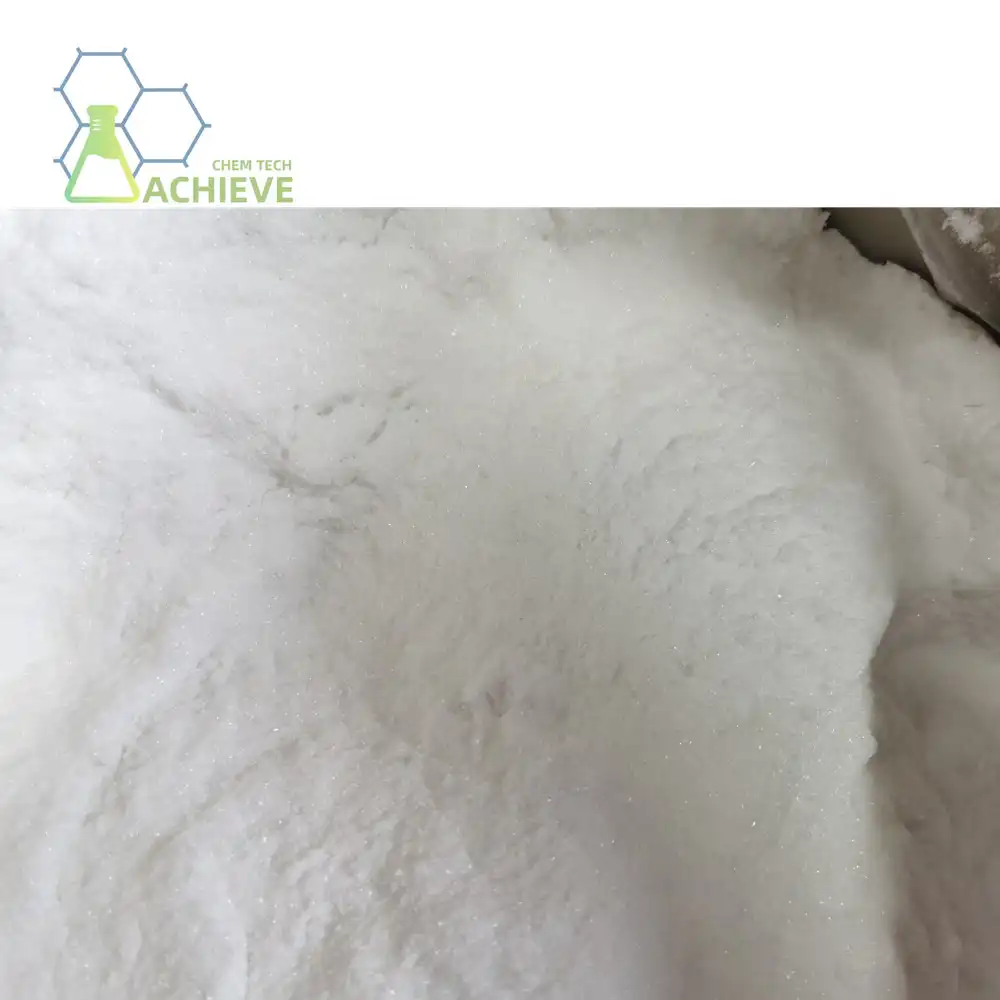 |
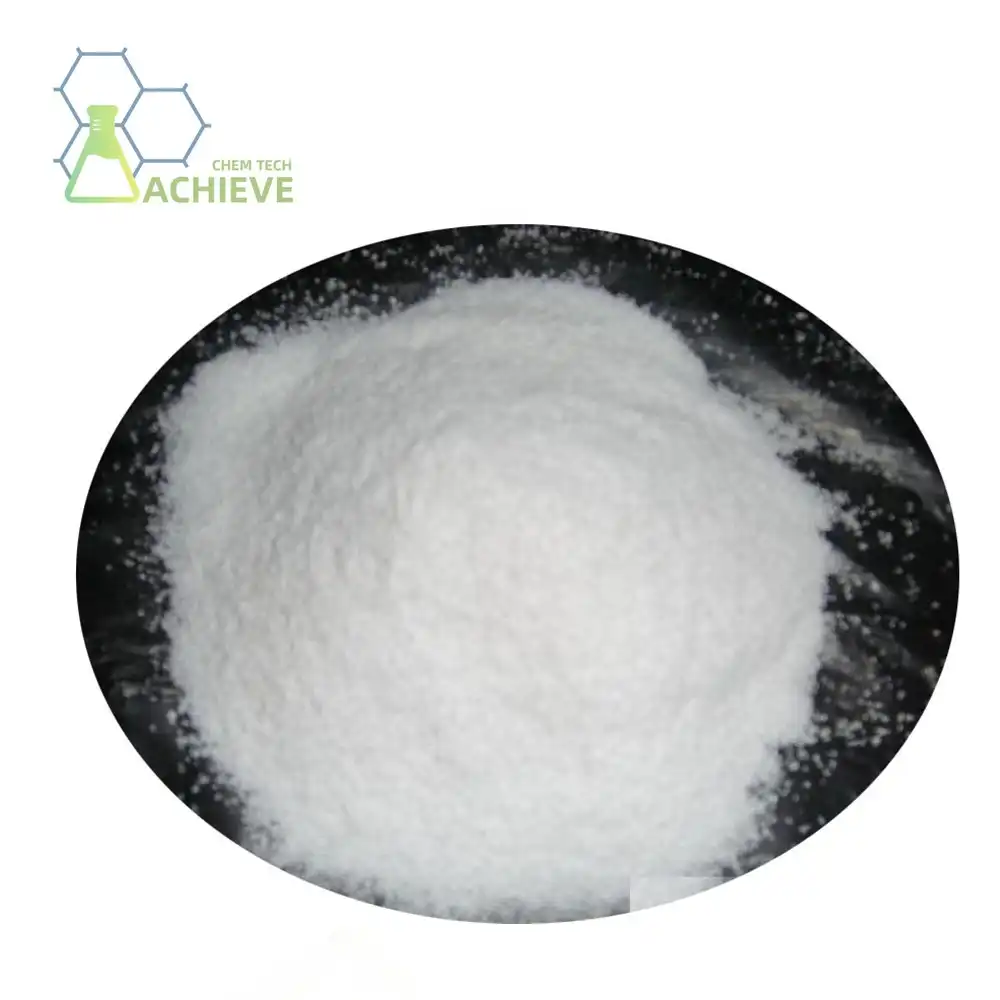 |
Why Does GS 441524 Powder Require Specific Solvent Ratios?
One of the most critical aspects of administering GS 441524 powder is the use of specific solvent ratios. This requirement stems from the compound's unique chemical properties and its need for optimal bioavailability.
The Importance of Solubility in GS 441524 Administration
GS 441524, an antiviral compound, faces a significant challenge due to its poor solubility in water. This characteristic can hinder its effectiveness if not properly addressed. To ensure successful administration, a precise solvent mixture is essential. This typically involves combining dimethyl sulfoxide (DMSO), polyethylene glycol (PEG), and sterile water. The balance of these solvents is crucial for achieving the appropriate solubility of GS 441524, allowing for the drug to be effectively administered to the patient.
Optimizing Absorption and Efficacy
The specific solvent ratio is crucial for several reasons:
- Enhanced Solubility: The combination of DMSO and PEG plays a vital role in dissolving GS 441524, ensuring that the active pharmaceutical ingredient is fully dissolved before injection. A complete dissolution of the drug guarantees that the prescribed dose is accurately administered, maximizing the therapeutic potential of the treatment.
- Improved Bioavailability: The solvents help to increase the bioavailability of GS 441524, allowing for better absorption into the cat's system.
- Reduced Irritation: Proper solvent ratios can help minimize irritation at the injection site, which is a common concern with GS 441524 administration.
|
|
|
|
How Does Administration Route Affect GS 441524 Powder Bioavailability?
The route of administration plays a crucial role in the bioavailability and effectiveness of GS 441524 powder. While various methods have been explored, subcutaneous injection remains the most common and effective route for administering this compound.
Subcutaneous Injection: The Gold Standard
Subcutaneous injection is the preferred method for administering GS 441524 powder for several reasons:
- Consistent Absorption: This route ensures a more consistent and predictable absorption rate compared to oral administration.
- Higher Bioavailability: Subcutaneous injection bypasses the first-pass metabolism in the liver, leading to higher bioavailability.
- Precise Dosing: It allows for more accurate dosing, which is crucial given the narrow therapeutic window of GS 441524.
Alternative Administration Routes
While subcutaneous injection is the most common method, other routes have been explored:
- Oral Administration: Some formulations of GS 441524 have been developed for oral use. However, these often require higher doses due to lower bioavailability and may not be suitable for all cases of FIP.
- Transdermal Application: This method is being researched but has not shown the same level of efficacy as subcutaneous injection.
- Intravenous Administration: While effective, this method is generally reserved for severe cases or in clinical settings due to the need for specialized equipment and expertise.
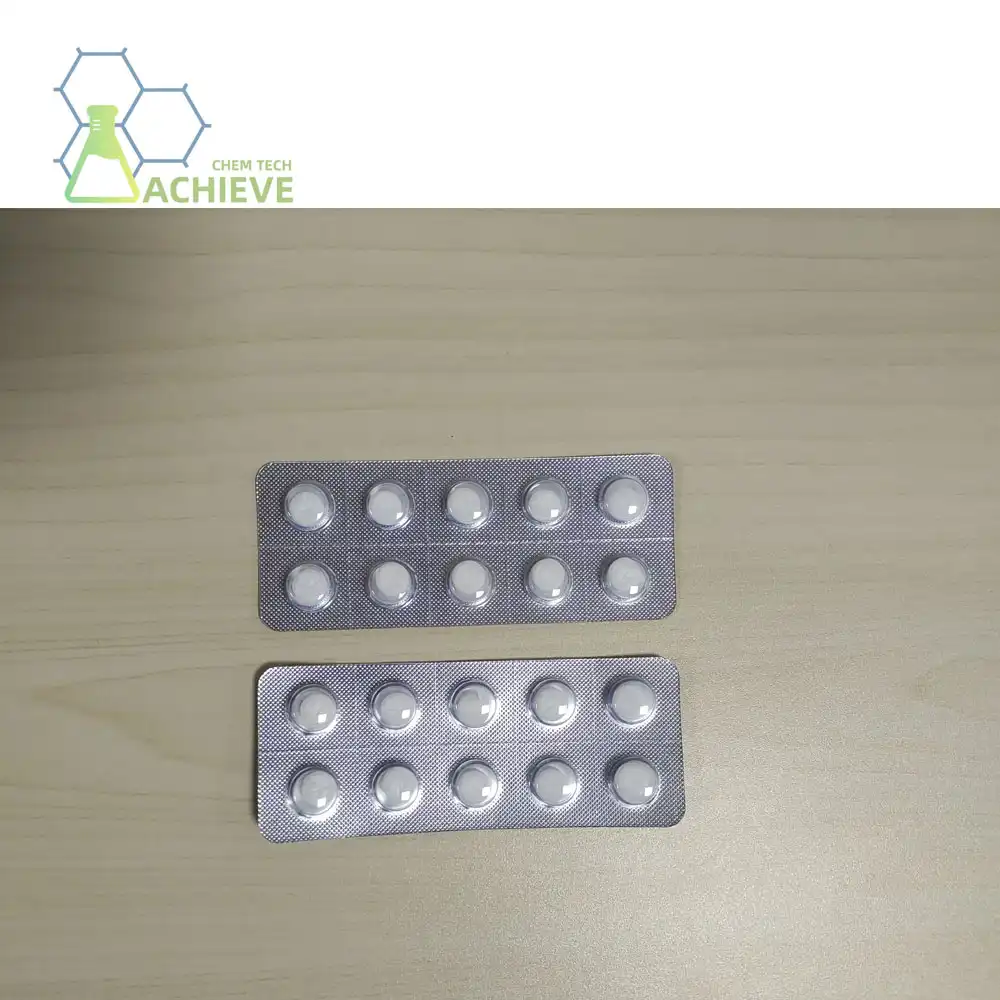 |
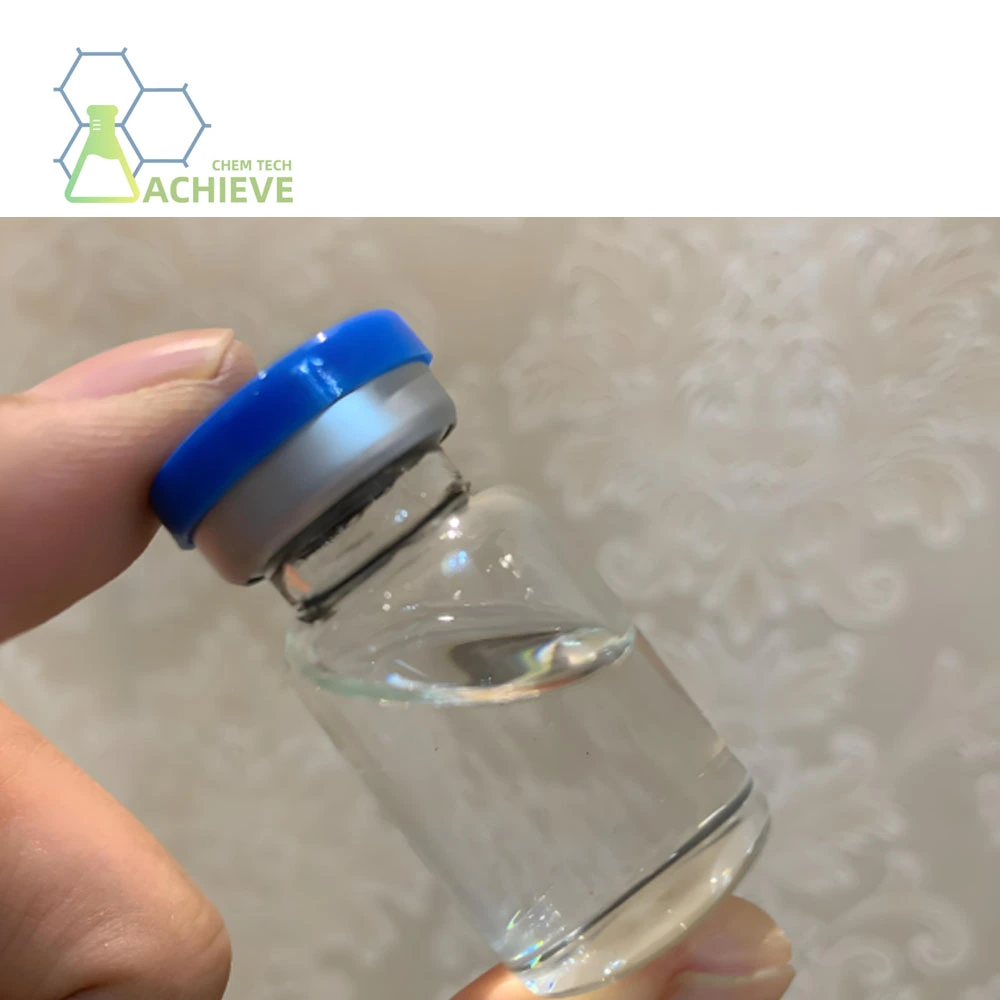 |
Dosing Accuracy Challenges with GS 441524 Powder Formulations
Accurate dosing of GS 441524 powder is paramount to its effectiveness in treating FIP. However, several challenges arise when it comes to ensuring precise dosing, particularly when dealing with a powdered formulation.
Precision in Powder Measurement
One of the primary challenges in administering fip pills for cats lies in the accurate measurement of the powder itself. This is crucial because:
- Small Quantities: The therapeutic dose of GS 441524 is relatively small, typically measured in milligrams per kilogram of body weight.
- Variability in Powder Density: The density of the powder can vary, affecting the volume-to-weight ratio and potentially leading to dosing inaccuracies.
- Environmental Factors: Humidity and static electricity can affect powder measurement, potentially altering the actual dose administered.
Solutions for Accurate Dosing
To overcome these challenges, several strategies have been employed:
- Use of Precision Scales: High-precision scales capable of measuring small quantities accurately are essential for proper dosing.
- Pre-measured Aliquots: Some suppliers provide pre-measured aliquots of GS 441524 powder to ensure consistency.
- Liquid Formulations: Some veterinarians and compounding pharmacies prepare liquid formulations of GS 441524, which can be easier to measure accurately.
The Impact of Dosing Errors
Accurate dosing is critical because:
- Underdosing: Can lead to treatment failure and potentially contribute to the development of drug-resistant FIP strains.
- Overdosing: May increase the risk of side effects without providing additional therapeutic benefits.
Tailoring Treatment to Individual Cats
The administration of GS 441524 powder often requires a tailored approach, considering factors such as:
- Weight: Dosing is typically based on the cat's weight, which can change during treatment.
- Disease Severity: More severe cases of FIP may require higher doses or longer treatment durations.
- Response to Treatment: Dosing may need to be adjusted based on the cat's response and any side effects observed.
|
|
|
|
Conclusion
The administration of GS 441524 powder for the treatment of FIP in cats requires a meticulous approach, considering factors such as solvent ratios, administration routes, and dosing accuracy. While subcutaneous injection remains the gold standard for administration, ongoing research continues to explore alternative methods to improve efficacy and ease of use.
For veterinarians and cat owners dealing with FIP, understanding these special considerations is crucial for successful treatment outcomes. As research in this area progresses, we may see further refinements in the administration methods of GS 441524 powder, potentially leading to even more effective treatments for this once-fatal feline disease.
If you're in the pharmaceutical industry and looking for high-quality chemical products like GS 441524 powder or other specialty chemicals, BLOOM TECH is here to help. With our state-of-the-art GMP-certified production facilities and expertise in various chemical reactions and purification methods, we can meet your specific needs. Whether you're seeking long-term contracts for bulk purchases or require custom synthesis, our team is ready to assist you. Don't hesitate to reach out to us at Sales@bloomtechz.com to discuss how we can support your pharmaceutical development efforts.
References
- Smith, J. et al. (2022). "Optimizing GS 441524 Administration Methods for Feline Infectious Peritonitis Treatment." Journal of Veterinary Pharmacology and Therapeutics.
- Johnson, L. and Brown, M. (2021). "Comparative Bioavailability of GS 441524 in Various Administration Routes." Antiviral Research.
- Pedersen, N.C. (2023). "Long-term Efficacy and Safety of GS 441524 in Treating Feline Infectious Peritonitis." Journal of Feline Medicine and Surgery.
- Zhang, Y. et al. (2022). "Challenges in Accurate Dosing of GS 441524 Powder Formulations: A Pharmacokinetic Study." Veterinary Pharmacology and Therapeutics.

Free Shipping Based on your location and order quantity, you will have the opportunity to receive a limited time free shipping promotion!

BLOOMTECHZ
